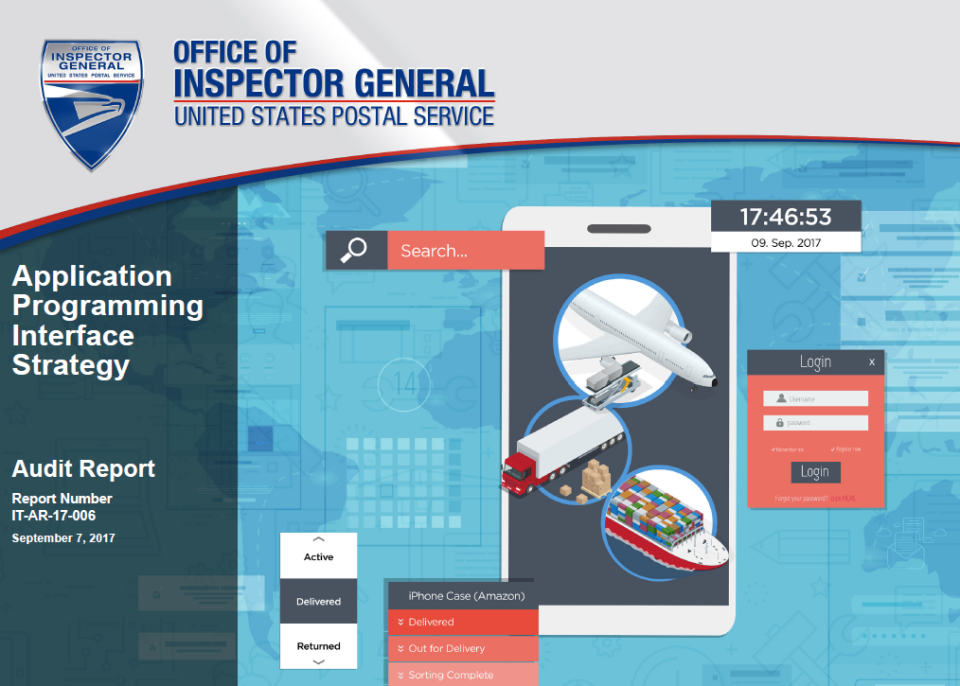Application Programming Interface Strategy
Background
The U.S. Postal Service’s Web Tools Application Programming Interfaces (API) provide a means for web developers and customers to integrate online Postal Service information and services into their websites. For example, ecommerce companies can help their customers track orders shipped by the Postal Service directly from their own websites. This is possible because companies can use Postal Service APIs to seamlessly retrieve shipping and tracking information and display that information on their websites automatically, saving its customers time and effort.
Currently, the Postal Service offers 34 external APIs to its customers. In 2016, these APIs processed over 46.4 billion requests (an average of about 3.8 billion each month) for over 70,000 customers. As the Postal Service strives to achieve the USPS Future Ready goals of improving the customer experience and investing in digital platforms, APIs can provide more automated services to meet customer needs.
Our objective was to determine if Postal Service APIs were configured and managed in accordance with Postal Service standards and industry best practices, and if opportunities exist to enhance API services.
What the OIG Found
We determined that the Postal Service Web Tools APIs are configured and generally managed in accordance with Postal Service standards and industry best practices. Defined processes exist for customers to register online in order to gain access to the APIs, and the Postal Service follows their internal software development process for implementing new APIs. The Postal Service also maintains an inventory of all external Web Tools APIs and user guides, and has an automated process to collect customer usage data. Overall, the Postal Service has taken measures to establish governance over its external Web Tools API services.
Based on our benchmarking, the Postal Service offers more external APIs to its customers than its major competitors do; however, opportunities still exist to enhance its API services. Our benchmarking analysis identified several APIs offered by competitors and foreign posts that the Postal Service should consider offering to external customers. Examples include APIs for locating post offices, estimating duties and taxes for shipments, and allowing customers to select a delivery address. The Postal Service has not conducted a comparative analysis of its API offerings against competitors and foreign posts, therefore, it may be missing opportunities for creating additional APIs to improve the customer experience.
We also identified that, while the Postal Service collects customer API usage data, it is not currently using that information to plan for future needs. This occurred because management did not agree on which group was responsible for reviewing and making decisions about the captured usage data. Without a process in place to analyze customer usage data, the Postal Service may not have information readily available to make decisions regarding future API demands or to determine whether or not to retire APIs.
In 2017, the Postal Service procured an API management tool that should enhance governance over its external APIs. This tool offers monitoring capabilities that have the ability to track customer usage information and performance metrics. Management stated that they are in the process of defining functional requirements and plan to have this tool implemented by October 2017.
What the OIG Recommended
We recommended the Postal Service consider the feasibility of implementing API services offered to external customers by its competitors and foreign posts, assign a responsible organization to review the Web Tools API customer usage data, and define functional requirements and implement the API management tool as planned.

